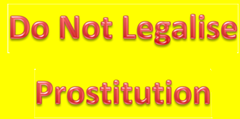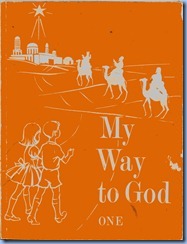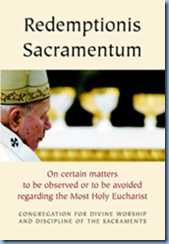
Some Excerpts from Redemptionis Sacramentum (2004) issued by the Congregation for Divine Worship and Discipline of the Sacraments and approved and ordered for publication by Bl. Pope John Paul II:
“[169.] Whenever an abuse is committed in the celebration of the sacred Liturgy, it is to be seen as a real falsification of Catholic Liturgy. St Thomas wrote, “the vice of falsehood is perpetrated by anyone who offers worship to God on behalf of the Church in a manner contrary to that which is established by the Church with divine authority, and to which the Church is accustomed”.[278]
[170.] In order that a remedy may be applied to such abuses, “there is a pressing need for the biblical and liturgical formation of the people of God, both pastors and faithful”,[279] so that the Church’s faith and discipline concerning the sacred Liturgy may be accurately presented and understood. Where abuses persist, however, proceedings should be undertaken for safeguarding the spiritual patrimony and rights of the Church in accordance with the law, employing all legitimate means.
[171.] Among the various abuses there are some which are objectively graviora delicta or otherwise constitute grave matters, as well as others which are nonetheless to be carefully avoided and corrected. Bearing in mind everything that is treated especially in Chapter I of this Instruction, attention should be paid to what follows.
2. Grave Matters
[173.] Although the gravity of a matter is to be judged in accordance with the common teaching of the Church and the norms established by her, objectively to be considered among grave matters is anything that puts at risk the validity and dignity of the Most Holy Eucharist: namely, anything that contravenes what is set out above in nn. 48-52, 56, 76-77, 79, 91-92, 94, 96, 101-102, 104, 106, 109, 111, 115, 117, 126, 131-133, 138, 153 and 168. Moreover, attention should be given to the other prescriptions of the Code of Canon Law, and especially what is laid down by canons 1364, 1369, 1373, 1376, 1380, 1384, 1385, 1386, and 1398.”
The following is especially relevant to all Catholics when they encounter Liturgical Abuses:
“6. Complaints Regarding Abuses in Liturgical Matters
[183.] In an altogether particular manner, let everyone do all that is in their power to ensure that the Most Holy Sacrament of the Eucharist will be protected from any and every irreverence or distortion and that all abuses be thoroughly corrected. This is a most serious duty incumbent upon each and every one, and all are bound to carry it out without any favouritism.
[184.] Any Catholic, whether Priest or Deacon or lay member of Christ’s faithful, has the right to lodge a complaint regarding a liturgical abuse to the diocesan Bishop or the competent Ordinary equivalent to him in law, or to the Apostolic See on account of the primacy of the Roman Pontiff.[290] It is fitting, however, insofar as possible, that the report or complaint be submitted first to the diocesan Bishop. This is naturally to be done in truth and charity.”
The following is related to the duties and obligations of the Diocesan Bishop
“4. The Diocesan Bishop
[176.] The diocesan Bishop, “since he is the principal dispenser of the mysteries of God, is to strive constantly so that Christ’s faithful entrusted to his care may grow in grace through the celebration of the sacraments, and that they may know and live the Paschal Mystery”.[285] It is his responsibility, “within the limits of his competence, to issue norms on liturgical matters by which all are bound”.[286]
[177.] “Since he must safeguard the unity of the universal Church, the Bishop is bound to promote the discipline common to the entire Church and therefore to insist upon the observance of all ecclesiastical laws. He is to be watchful lest abuses encroach upon ecclesiastical discipline, especially as regards the ministry of the Word, the celebration of the Sacraments and sacramentals, the worship of God and the veneration of the Saints”.[287]
[178.] Hence whenever a local Ordinary or the Ordinary of a religious Institute or of a Society of apostolic life receives at least a plausible notice of a delict or abuse concerning the Most Holy Eucharist, let him carefully investigate, either personally or by means of another worthy cleric, concerning the facts and the circumstances as well as the imputability.
[179.] Delicts against the faith as well as graviora delicta committed in the celebration of the Eucharist and the other Sacraments are to be referred without delay to the Congregation for the Doctrine of the Faith, which “examines [them] and, if necessary, proceeds to the declaration or imposition of canonical sanctions according to the norm of common or proper law”.[288]
[180.] Otherwise the Ordinary should proceed according the norms of the sacred canons, imposing canonical penalties if necessary, and bearing in mind in particular that which is laid down by canon 1326. If the matter is serious, let him inform the Congregation for Divine Worship and the Discipline of the Sacraments.
5. The Apostolic See
[181.] Whenever the Congregation for Divine Worship and the Discipline of the Sacraments receives at least a plausible notice of a delict or an abuse concerning the Most Holy Eucharist, it informs the Ordinary so that he may investigate the matter. When the matter turns out to be serious, the Ordinary should send to the same Dicastery as quickly as possible a copy of the acts of the inquiry that has been undertaken, and where necessary, the penalty imposed.”
Read the Complete Document of Redemptionis Sacramentum Here




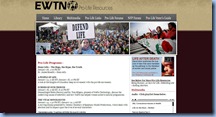
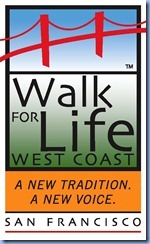
![image[4] image[4]](http://lh6.ggpht.com/-Vh2v2Uq7uU8/UKijvV6El9I/AAAAAAAACZ0/C-YtLYrNA0A/image%25255B4%25255D_thumb.png?imgmax=800)
![clip_image002[19] clip_image002[19]](http://lh4.ggpht.com/-xq_wP3DOeZ4/UKijz0dwkxI/AAAAAAAACaE/fC9zg5O9hGc/clip_image002%25255B19%25255D_thumb%25255B1%25255D.png?imgmax=800)





